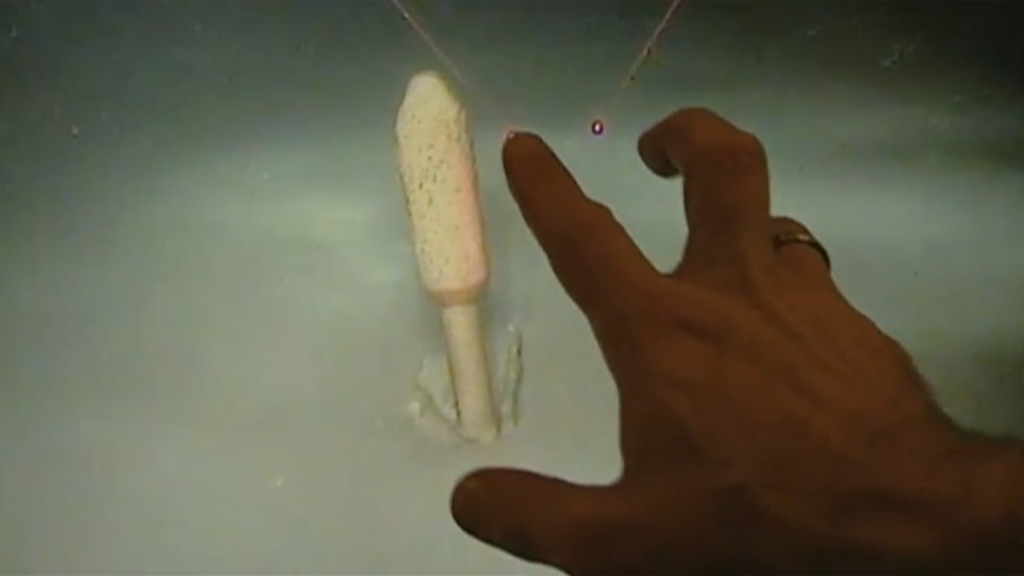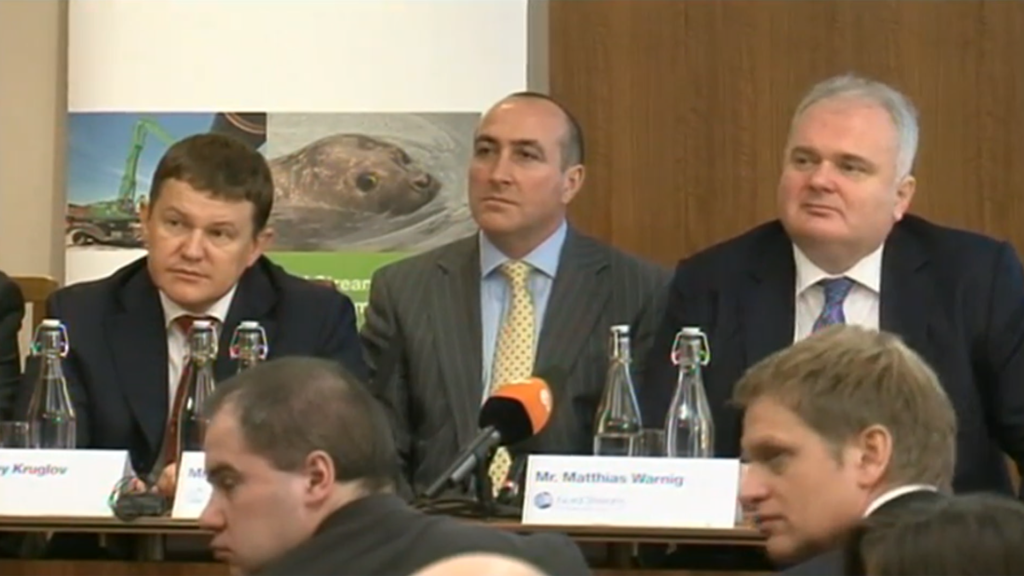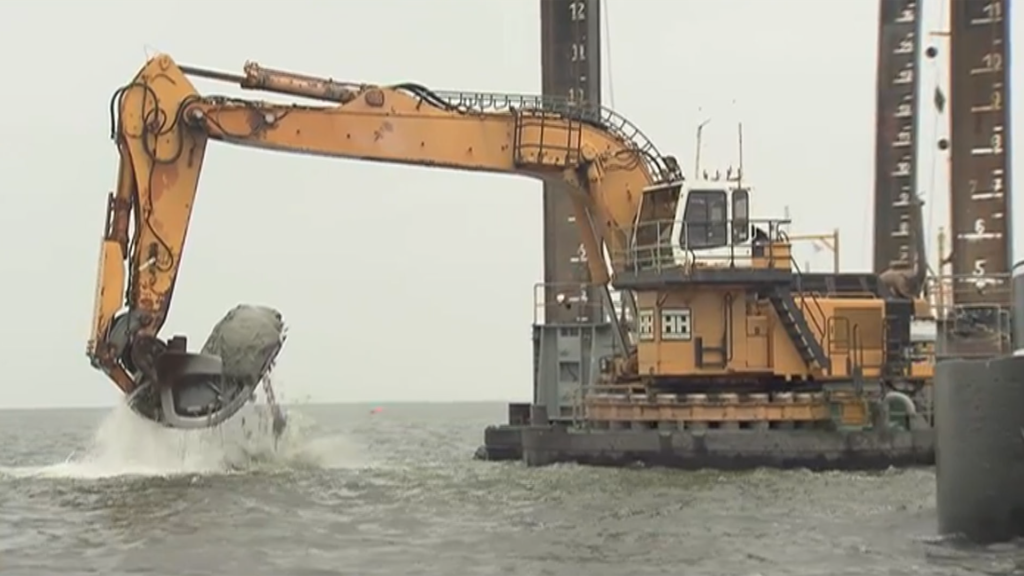Russian Fossil Fascism is Europe’s Fault

FEBRUARY 24, 2022, BERLIN: the ministers of the German federal government are meeting with Andriy Melnyk, then Ukrainian ambassador to Germany.
MEETING SUBJECT: the full-scale invasion of Ukraine, launched by the Russian military earlier that day.
POSITION OF GERMAN FINANCE MINISTER CHRISTIAN LINDNER: only several hours remain until the crushing defeat of Ukraine by the Russian Federation; delivery of weapons to Ukraine or sanctions against Russia make no sense; instead, one should look into the future and accept the reality of an occupied Ukraine with a puppet government installed by Russia.
After this account (according to the Ukrainian ambassador) was made public, it has been denied by the German side. Still, if we look at German policy with regards to Eastern Europe during the last decade or so, this story sounds quite credible and almost unsurprising. In the end, it was the German government that had, by agreeing to construct the Nord Stream gas pipeline linking Russia and Germany directly via the Baltic seabed and bypassing Ukrainian gas transit routes, made it crystal clear to the Russian elites that the territory of Ukrainian state is actually up for grabs.
By joining the Nord Stream project, Germany had signaled—perhaps, unwittingly—that all the talk about Ukraine’s role in the European project is nothing but hollow rhetoric. In the European reality that emerged after the collapse of the Soviet Union, the newly independent Ukraine has been ascribed, shamefully, with only one real geopolitical role: that of a transit zone enabling delivery of Russian fossil fuels to European consumers via the Soviet-era oil and gas pipelines buried in Ukrainian lands. The major rationale behind the Nord Stream project was to render this gas transit zone obsolete; in the moment when Germany agreed to strip Ukraine of its transit potency, the stage for Russia’s 2022 invasion was set.

In fact, the conversation on February 24th, 2022, described above, looks like the apex of a long-term thaw between the two former adversaries who share the experience of catastrophic failures of their 20th century colonial efforts. For one of those adversaries, its colonial failure resulted in a sense of unhealable historical guilt, while for the other it resulted in an urge to restore the perceived imperial greatness it lost with the collapse of the Soviet Union. On February 24th, it looked like these two traumatic experiences perfectly dovetailed with each other: Germany seemed prepared to yield its declared adherence to the idea of national self-determination for Ukrainians, thus ridding itself of any perceived historical guilt vis a vis Russia, while the Russians seemed perfectly ready to squash this self-determination by brutal force. If you’re looking for ‘two imperialisms’ somehow involved in the invasion of Ukraine, here they are: two wannabe-superpowers poised to divide their spheres of influence and decide on the fates of Eastern European nations above their heads.
As it often happens in history, an informal agreement between the two imperial powers has been thrown into disarray by one factor that remained out of reach of these imperial designs: Ukraine’s popular resistance. As we now know, Western predictions about the swift collapse of Ukrainian resistance proved to be completely false, since they were themselves based on neo-colonial, technocratic logic, which is usually very poorly informed when it comes to the complex dynamics of the societies it is trying to comprehend. For Ukrainians, it was clear from the start that a potentially occupied Ukraine promised something different than what Minister Lindner could probably imagine: it meant mass killings, brutal counter-insurgency, establishment of concentration camps and, most likely, genocide on a scale not seen on the European continent since WWII. The popular effort to aid the Ukrainian army saved innumerable lives that would definitely have been lost had the Russians (whose invasion arsenal included equipment for the mass disposal of dead bodies) been able to take control of Ukrainian territory as predicted by Western analysts.

But, paradoxically, this resistance had also saved something that did not necessarily deserve to be saved. I am speaking of the reputations of those European politicians and governments that had been ready for business-as-usual with Russia, even as it morphed into a fully fascist, mass-murderous monster. A cautious u-turn with regards to Russia was only made by these elites when it became clear, in the early days of the invasion, that Ukrainian resistance had halted the Russian blitzkrieg.
How has it come about that the European elites—and a large part of the general public—have been turning a blind eye to the Russian Federation’s ever more obvious descent into openly fascist politics? Have they not been educated for decades specifically on the recognition of fascist threats as huge as this one? Wasn’t there supposed to be an anti-fascist consensus, at least in German society? These are the questions that many in Ukraine are now asking, seemingly in vain.
One reason for this blindness lies, of course, in a deliberate, decades-long obfuscation of the terms like ‘anti-fascism’ and ‘fascism’ by the Russian regime itself. For years, it cultivated a habit of arbitrarily labeling anyone opposing Putin’s rule as ‘Nazis’ (while simultaneously incorporating multiple figures from Russia’s own neo-Nazi movements into pro-government structures). It has been planting neo-Nazi groups in nearly every post-Soviet state, precisely in order to then claim that the Russian state has to step in and save ethnic Russians from them (in Ukraine, some of these groups spiraled out of Russia’s control, but have still objectively fulfilled the Kremlin’s goals by sowing division). The Russian regime has been also capitalizing on Western ignorance with regards to the history of WWII, which has allowed Moscow to claim that ‘the Russian army liberated Germany from the Nazis’ (in fact, the Russian army did not liberate Germany from the Nazis—the Russian army simply did not exist during WWII. It was the Red Army – an internationalist armed force of the Union of Soviet Socialist Republics, composed of several dozens of nationalities, among which were Russians of course, but also Ukrainians and others whose history Russian rhetoric now seeks to erase. Every time the Red Army is misnamed as the ‘Russian Army’, we are dealing with a colonial erasure of numerous other nations, some of which, like Ukraine, were affected by the devastation of World War II to a disproportionate extent).
Had the West been less perceptive to Putin’s gaslighting, with regards to the Nazi problem, it would undoubtedly be able to recognize that what we are dealing with in Russia has a very clear definition in political science: fascism. Indeed, in order to identify today’s Russian Federation as a textbook fascist regime, we did not need to wait for Putin to publicly officially declare a war based on the denial of a certain ethno-political group’s right to exist. We did not need to wait for the Russian state media to publish calls for the physical extermination of Ukrainian identity and the establishment of re-education camps for those who survive the purge. We did not need to wait for the Russian invading troops to start executing these calls in the occupied territories of Ukraine. The ideological trajectory of the Russian Federation has been very clear for quite some time, as the Russian ruling elites have been very open about their neo-fascist leanings for years and even decades.

It has become almost commonplace to stress that the likes of the Russian fascist pseudo-philosopher Alexander Dugin have been involved for years in framing the Kremlin’s political agenda of Eurasianism. A lot has been said about Ivan Ilyin, a Hitler sympathizer who has recently gained the status of the most influential Russian thinker of the 20th century, even referred to as ‘Putin’s favorite philosopher’. There are no shortage of historical parallels between contemporary Russian fascism and its historical predecessors either. On the level of political economy, the origins of Russian fascism are rooted in a way the end of the Cold War was handled by the victorious West, just as the origins of German Nazism have been attributed to the Treaty of Versailles. The populations of both countries have been subjected to massive economic punishments for the defeats suffered by their elites—with similar outcomes. Just as German Nazism was a product of the hyperinflation of the 1920s, Russian fascism of today can be seen as a product of hyperinflation of the 1990s.
Still, it would be wrong to see today’s Russian fascism as a mere reenactment of fascist movements of the past. Just as historical fascism has been the product of the class antagonisms and failed revolutions of the early 20th century, today’s fascisms emerge as reactions to ongoing struggles worldwide: most importantly, decolonial, anti-patriarchal, and ecological ones. While the Russian Federation has itself exposed the colonial character of its invasion of Ukraine to a sufficient degree, and the same can be said of its anti-feminist, male-chauvinist agenda, which is pursued by its puppets far beyond its own borders (most obviously in places like Poland and Hungary), the ecological dimension of new Russian fascism is almost completely missing from European public discourse. In fact, this absence comes as no surprise. Raising the issue of Russian fossil fuels and their dual role in the destruction of both the planetary climate and European democracy exposes the complicity of Western—first and foremost, German—governments with the emergence of new fascism on the continent.
A concise and catchy name has been given to this looming planetary threat: fossil fascism. In their book White Face, Black Fuel: On the Dangers of Fossil Fascism, Andreas Malm and the Zetkine Collective convincingly argue that the threat of fossil fascism emerges from a worldwide alliance of multibillion-dollar fossil industries fearing decline due to their obvious role in the climate catastrophe, together with the far right movements around the world that also happen to be increasingly climate-denialist. The book’s authors see a power grab by the fossil fascist regimes as a possible, but not inevitable future threat, rather than an immediate reality of today. This is most probably dictated by the geography of their research, which is limited to the US, Brazil, and Western and Central Europe; the Russian Federation—one of the world’s biggest exporters of fossil fuels, and perhaps the biggest exporter of contemporary far-right ideologies—is an elephant in the room.
A close look at the emergence of Putinism both as a far-right ideology and an extractivist economic model makes it clear that the model of fossil fascism has not been pioneered by the likes of Trump or Le Pen, as Malm and the Zetkine Collective seem to suggest. It has been around—and in power—since at least the early 2000s, when the Kremlin consolidated its grip over the Russian fossil fuel industry. It has been noted by numerous political scientists—and in various other contexts—that economies based on extraction of fossil fuels tend to transform into autocracies. The centralization of power, the increased role of the security apparatus, and the mistaken perception that fossil resources are somehow unlimited are all effects of fossil fuel extraction, and they all enhance authoritarian power models. This also allows for the export of these models to contexts outside of their own political systems, along with oil and natural gas—to Western Europe, for instance.

It’s worth noting that Russia’s fossil fuel industry—an enormous infrastructure for extraction and transportation of oil and gas, spanning from Siberia to Western Europe—was itself key to the dissolution of Soviet Communism and the emergence of a kleptocratic, extractivist far-right regime from its ruins in Russia. Since the 1980s, the USSR and West Germany had been connected via a transcontinental natural gas pipeline that was dubbed ‘the deal of the century’ by Soviet historians, but whose construction had been fiercely opposed by the US. The West German government argued that doing gas business with the USSR on such a gigantic scale would not pose a security threat, as the Americans claimed. To the contrary: the German calculation was that the Soviet elites, faced with the promise of profits as enormous as those made possible by seemingly limitless gas extraction, would be so seduced by the prospect of capitalist wealth, that they would ultimately abandon the Communist project.
Far-fetched as it may seem, this is exactly what happened in 1991, when the top-down dissolution of the Soviet Union by party elites led to the unprecedented privatization of profits generated by the fossil fuel industry. During the post-Soviet decades these profits were converted not only into exorbitant wealth for the lucky few, but also into a resurgent military apparatus and an aggressive foreign policy breeding on revanchist gibberish fed to the Russian population by the state’s propaganda machine. In the meantime, the extractivist infrastructure grew rapidly due to new lucrative Russian-German deals like the Nord Stream. This kept Europe in a sleepy delusion that as long as the Russian elites get their ultra-profits from fossil fuel exports, their fascist rhetoric will not transform into military action, because ‘business does miracles’.
Then came February 24, 2022.
In its ideological self-image, today’s Russian Federation presents itself as staunchly anti-Western, a bearer of some kind of obscurantist, orientalist, Eurasianist model. Nothing exposes the ideological manipulation behind Russian fossil fascism better than this attempted rejection of its own Western origin. Like any other fascism known to history, Russian fascism is nothing but an ugly byproduct of the Western capitalist development. More specifically, fossil fascism, as it emerged in Russia, is a direct product of Europe’s dealings with its own resource periphery. In fact, Russian fossil fascism is, plain and simple, Western fascism in its new iteration. The failure of Europe to recognize its own role in the advent of Russian fossil fascism may lead to far greater disasters than the one Ukraine is addressing now.
This text was featured in the exhibition Out Loud / Вголос / Na głos at Galeria Labirynt in Lublin, PL.
Oleksiy Radynski is a filmmaker and writer based in Kyiv. His films have been screened at International Film Festival Rotterdam, Kurzfilmtage Oberhausen, Docudays IFF, the Institute of Contemporary Arts (London), and S A V V Y Contemporary (Berlin), among others, and have received a number of festival awards. After graduating from Kyiv-Mohyla Academy, he studied at the Home Workspace Program (Ashkal Alwan, Beirut). In 2008, he cofounded Visual Culture Research Center, an initiative for art, knowledge, and politics in Kyiv. His texts have been published in Proxy Politics: Power and Subversion in a Networked Age (Archive Books, 2017), Art and Theory of Post-1989 Central and East Europe: A Critical Anthology (MoMA, 2018), Being Together Precedes Being (Archive Books, 2019), and e-flux journal.
Published 4 October 2022
